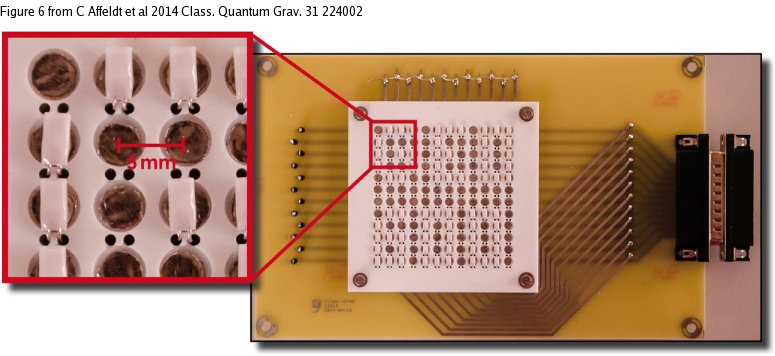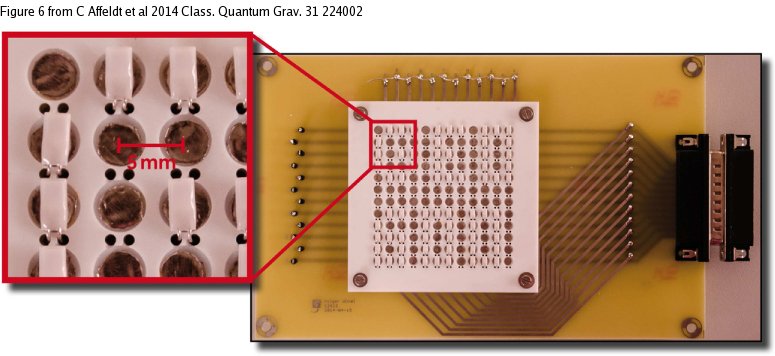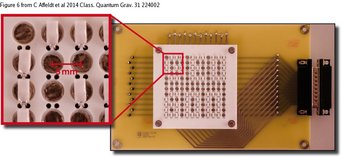
2015
Spatially resolved heating of the GEO600 beam-splitter
GEO600 does not use arm cavities for laser-power build-up. In our detector, this role is played by the high-finesse power-recycling cavity. This, however, means that unlike in the LIGO or the Virgo detectors, the high laser power also transmits the GEO600 beam-splitter. Currently, GEO600 runs with 2-3 kW of circulating laser power, which in the GEO-HF upgrade will be increased to 10-15 kW.

The effects of the resulting thermal lens in the GEO600 beam-splitter can be mitigated by selectively heating the beam-splitter. The applied spatial temperature profile has to be inverse to the one produced by the main laser beam.
We built a two-dimensional matrix of 12×12 small heat sources for GEO600. We plan project an image of this heater matrix onto the beam-splitter surface. This has the advantage of allowing us to project arbitrary heating patterns without changes in the hardware setup.
We expect this to prove useful for the thermal compensation on the beam splitter of GEO600. The cross-section of the laser beam in the beam-splitter is oval and the laser also passes the beam-splitter at an angle. Furthermore, the laser does not create a Gaussian heat profile. Instead, there are several very small and hot spots on the beam-splitter. These might be mitigated, as far as the spatial resolution of the heater matrix permits. Further fine-tuning of the projected heating pattern might be obtained through optimization methods such as genetic algorithm, using the dark-port power of GEO600 as an error signal.
